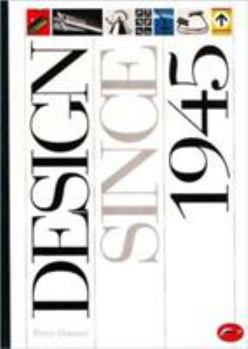Design Since 1945
(Part of the World of Art Series and World of Art Series)
Select Format
Select Condition 
Book Overview
The essential shape, form and structure of some objects in our daily lives may have been fixed many generations ago, but design and designers have now been moved center stage by the varied demands of a society that in less than half a century has gone from the restless search for the new throw-away consumerism to a postmodernist recycling of ideas - and now, Green recycling of materials. Companies use design systematically to plan their manufacturing, shape their marketing and make their products more attractive, while many designers have sought to raise the status of their activity to that of an art form and even - like Ettore Sottsass - to see it as "a way of discussing life". Dormer questions orthodoxies, defines the contexts within which designers work, and aims to cover the wide range of post-war activity, including industrial and product design, graphics, furniture, textiles, kitchen utensils and tableware. His previous books include The New Ceramics, The New Furniture and The Meanings of Modern Design.
Format:Paperback
Language:English
ISBN:0500202613
ISBN13:9780500202616
Release Date:March 1993
Publisher:Thames & Hudson
Length:216 Pages
Weight:1.08 lbs.
Dimensions:0.6" x 5.9" x 8.2"
Customer Reviews
1 rating
is this an illustration for 'less is more?'
Published by Thriftbooks.com User , 20 years ago
If this is your first design book, it's a good place to start. The author manages to survey the evolution of major design areas (industrial/product, graphic, furniture, domestic ware, textile) in the US, UK, Italy, Scandinavian countries, Germany, and Japan from 1945 to 1990. It is a quick read, a little light on the amount of conceptual information, and decently illustrated as far as color, size and matching text with photos. One almost feels this is (part of) the material for a college intro class in design history. Even though this is the 2001-reprint of a 1993 edition, the book leaves out important design developments of the 1990's. Nothing is being said of, say, Windows 95 or the Aeron chair from Herman Miller. Considering how much is being left out relative to how much it is covered I recommend this book as a decent starter.






